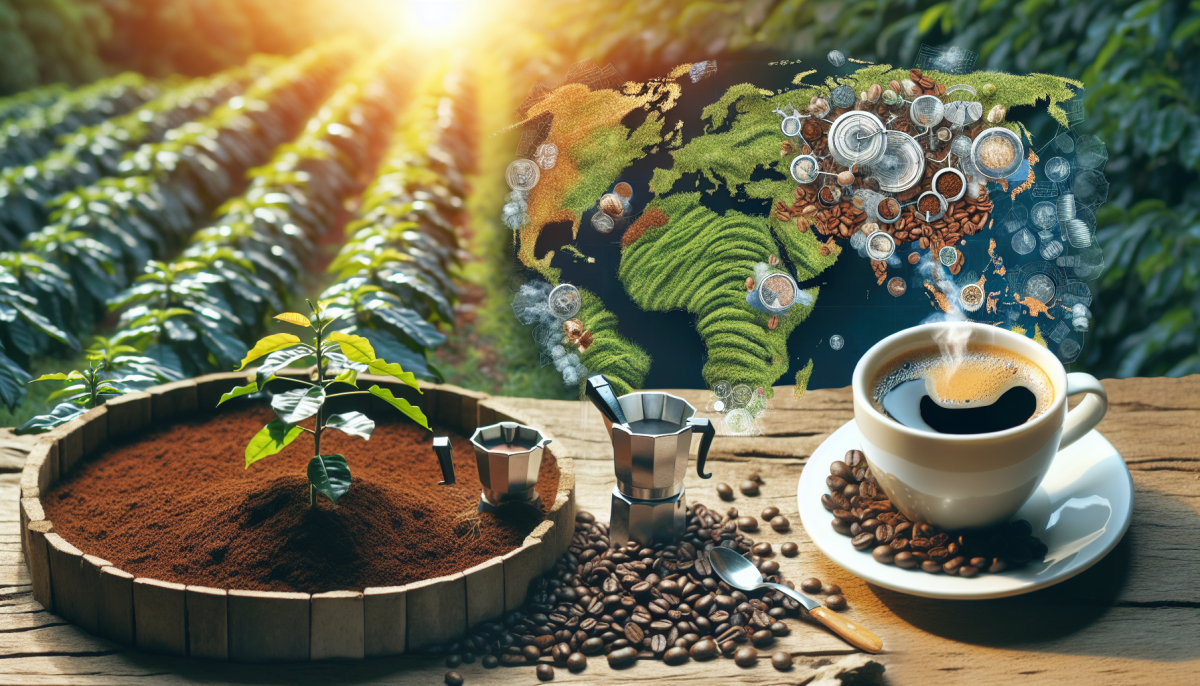Have you ever wondered where your morning cup of coffee really comes from? The journey of coffee beans starts in the lush, green hills of tropical regions. Most coffee we drink today originates from areas like Brazil, Colombia, and Ethiopia. These countries have the perfect conditions for growing coffee, with just the right amount of sun, rain, and altitude.
Coffee beans actually come from the fruit of the coffee plant, which is called a "cherry." When these cherries are ripe, they're picked by hand or harvested with machines. Once collected, the cherries need to be processed quickly to avoid spoilage. This processing involves removing the outer fruit and drying the beans, which are then hulled to reveal the green coffee beans we know and love.
After that, the beans are sorted and graded based on their quality. This step is key because the quality of the beans affects the flavor of the coffee. Higher-quality beans often come from specific regions that have optimal growing conditions, strict harvesting methods, and careful processing. Once sorted, the beans are roasted to bring out their unique flavors, which is something every coffee lover eagerly anticipates!
From those sun-kissed bean farms, coffee has made its way around the globe, turning into a multi-billion dollar industry. This journey reflects not just the rich cultures and traditions of coffee-growing countries, but also the deep connections coffee has formed with people everywhere—from the local cafés to bustling cities. Every sip carries a story, and it's fascinating to think about how such a simple drink can connect so many of us across the world.
How Coffee is Grown and Processed
Coffee starts its journey on lush green hillsides where coffee plants thrive. These plants prefer a tropical climate, meaning they're mostly found near the equator. Once they’re big enough, the plants produce beans, which are actually the seeds inside bright red coffee cherries. It’s a beautiful sight when the trees are laden with ripe cherries, just waiting to be picked!
The harvesting process is quite the sight as well. In many places, workers pick the cherries by hand, ensuring only the ripest ones are chosen. This method is labor-intensive but essential for high-quality coffee. Some large farms use machines to speed up the process, but they can’t always select only the best cherries.
Once harvested, the cherries go through processing to separate the beans from the fruit. There are two main methods: the wet and dry processes. In the wet process, the cherries are pulped and fermented in water, which helps remove the sticky fruit. The dry process involves spreading the cherries out in the sun to dry before milling them. Each method brings its own flavor profile to the coffee, impacting what you taste in your cup.
After processing, the beans are then dried, hulled, and sorted to prepare for export. They may be shipped to many corners of the globe, roasting them into the delightful coffee we enjoy daily. Each step in this journey—from the plant to our mugs—plays an important role in the flavors and aromas we love!
Coffee's Role in Global Economies
Coffee isn’t just a morning ritual for many; it's a significant player in global economies. Millions of people around the world depend on coffee cultivation for their livelihoods. In fact, coffee is one of the most traded commodities, sitting right alongside oil and gold. Countries in Latin America, Africa, and Asia rely heavily on coffee exports, making it a vital part of their economies.
For many smallholder farmers, coffee can be the difference between economic stability and hardship. When prices are good, it can provide families with the means to afford essentials like food, education, and healthcare. However, the coffee market can be tricky because prices fluctuate based on supply, demand, and even weather patterns. This unpredictability means that coffee-growing regions often face economic challenges, especially when crop yields drop.
Beyond farming, coffee also creates a ripple effect in various other sectors. The coffee industry provides jobs in processing, transportation, and retail. From the farmers who grow the beans to the baristas who prepare your favorite brew, many hands are involved in bringing coffee from the farm to your cup. This connection between different sectors highlights how a single product can impact many lives.
And let's not forget about the cultural significance of coffee, which plays a role in local economies, too. Coffee shops often become community hubs, fostering social connections while boosting local businesses. This blend of culture and commerce shows just how intertwined coffee is with everyday life, reaching far beyond just being an economic commodity.
Cultural Traditions Around the World
Coffee isn’t just a drink; it’s a ritual that brings people together in many cultures around the world. From the bustling streets of Italy to cozy cafes in Ethiopia, the way we enjoy coffee often reflects our unique cultural traditions. Let’s dive into a few fascinating customs that highlight coffee’s importance globally.
In Ethiopia, coffee ceremonies are a beloved tradition. Families often invite guests to join in this symbolic process. The host roasts green coffee beans over a fire, then grinds them and brews the coffee in a special pot called a jebena. This isn’t a quick cup of joe—it's an event! Guests sip the freshly brewed coffee while chatting, creating bonds over flavors and stories.
Over in Italy, coffee breaks are a cherished part of daily life. Ordering a coffee comes with its own set of rules. For example, if you order a cappuccino, it’s typically only enjoyed in the morning. By afternoon, it’s all about espresso. Italians believe that the right time for coffee can enhance the experience, and it often involves a brief social moment, whether at a bar or on the street.



